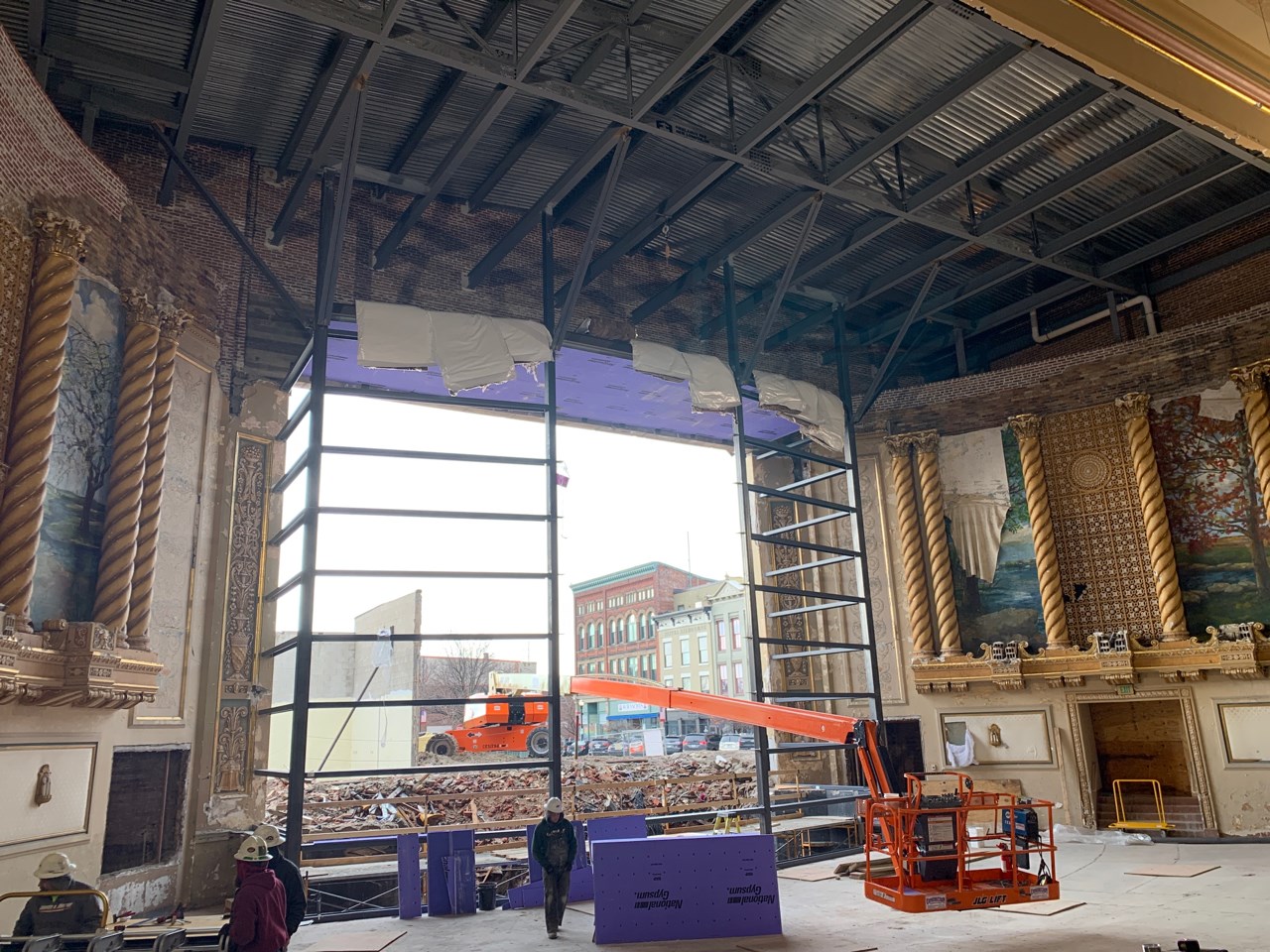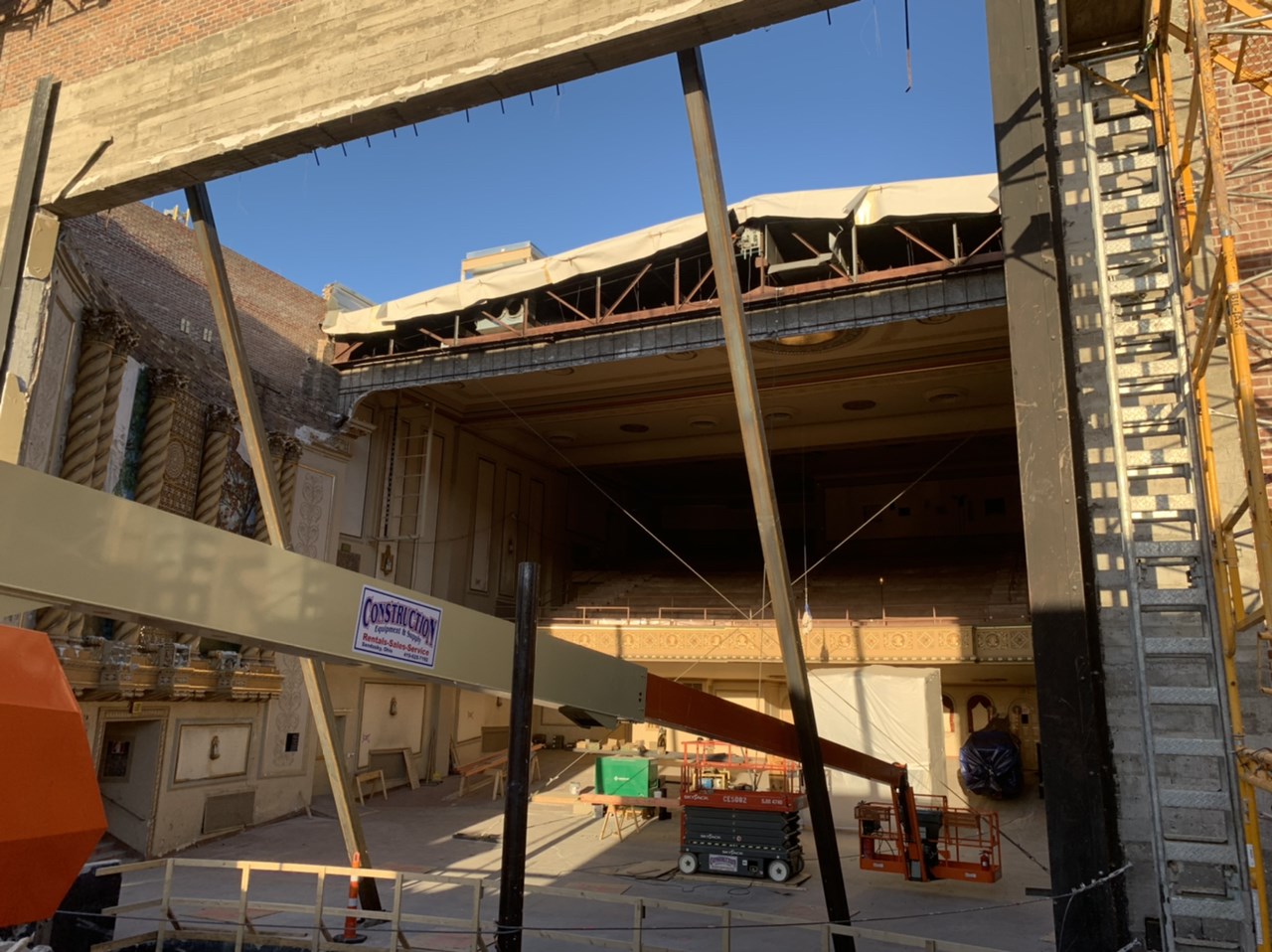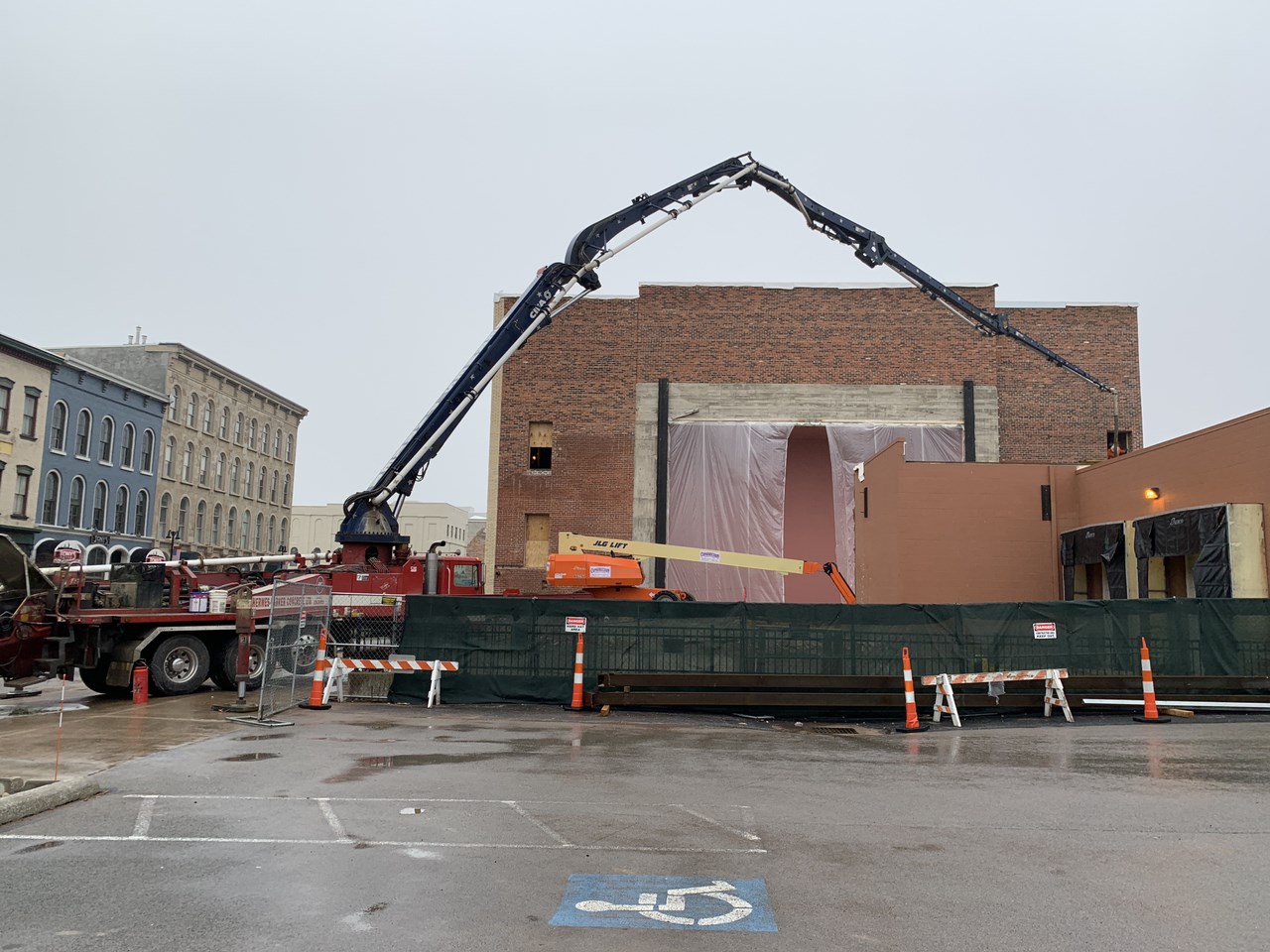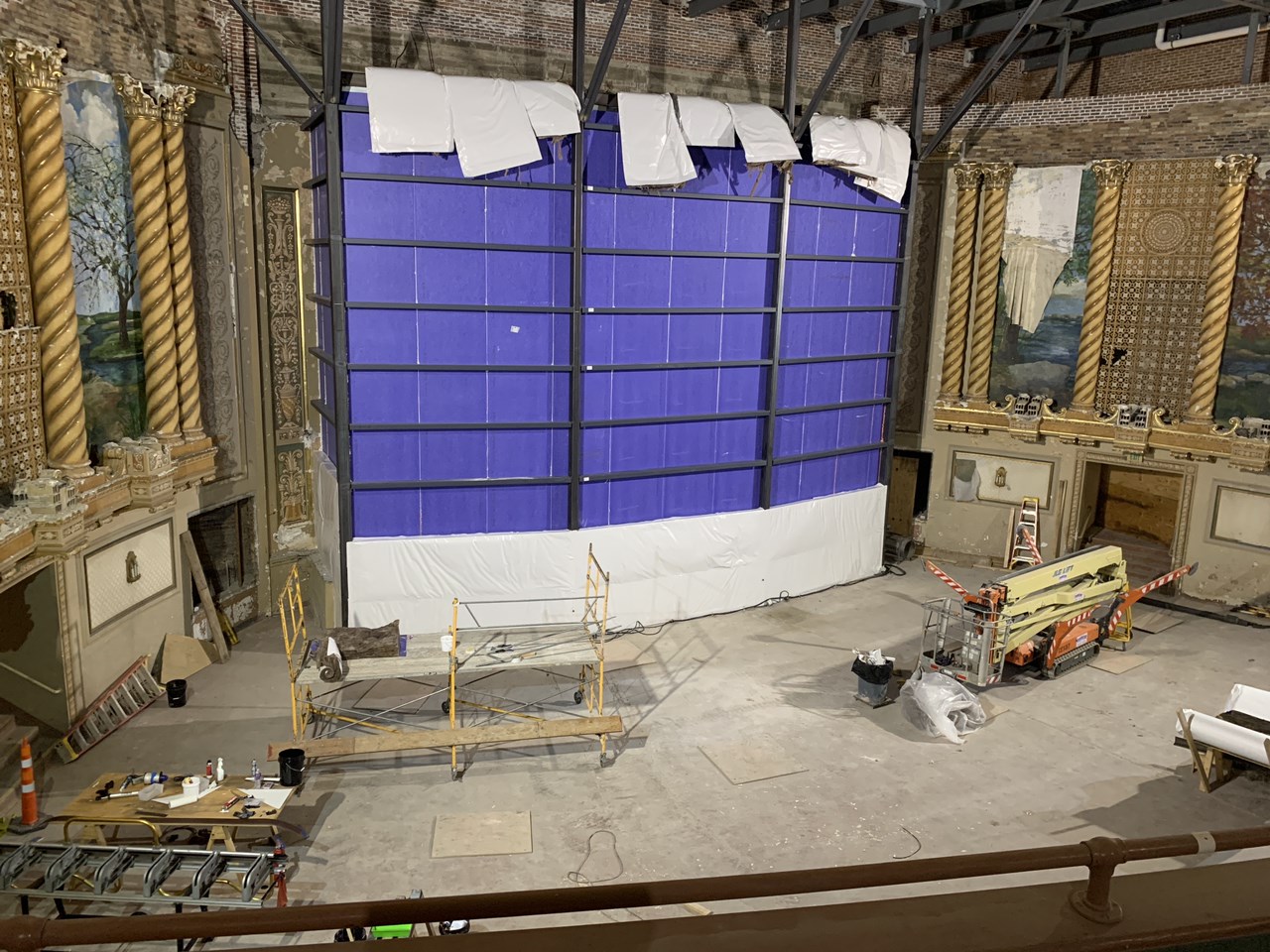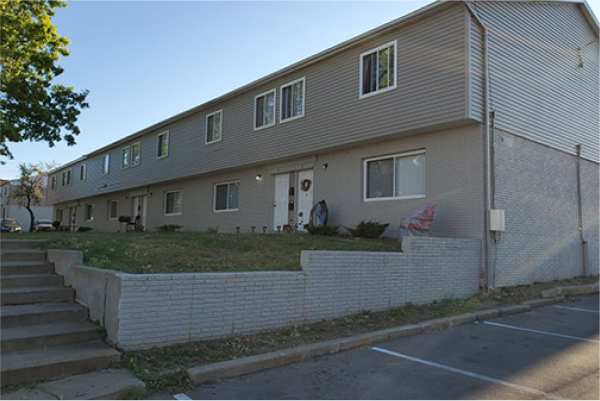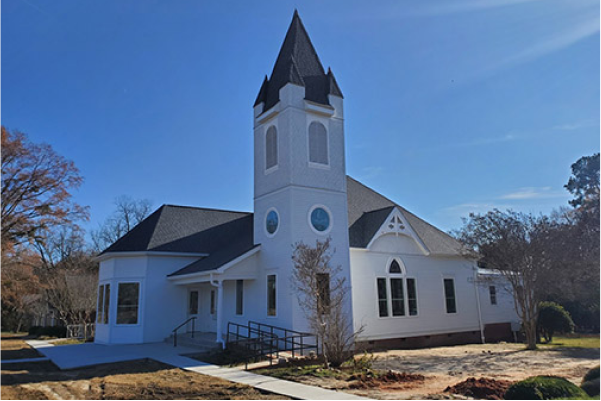DISASTER STRIKES SANDUSKY
Sandusky State Theatre opened in 1928, with a Page pipe organ for silent movies and other entertainment manufactured in Ohio. The theatre was known as the Schine Theatre when it debuted. In 1988, the theatre was officially placed on the National Register of Historic Places. The theatre is a proud member of the Ohio Arts Council, serving as a historic landmark in the Sandusky community. By providing a variety of programs of artistic, educational and social value, Sandusky State Theatre enhances the lives of their residents. In recent years, the theatre evolved into a multipurpose facility for concerts and community events, in addition to movies.
On the night of June 10, 2021, severe weather brought strong winds through Sandusky, decimating the historic State Theatre. The bricks that once held together a piece of history, were scattered, falling onto cars in the street and blasted apart the theatre's stage area. Within moments, nearly one hundred years of history came crashing down. The theatre was not open at the time of the storm, due to the coronavirus pandemic. Luckily, despite the damage, no injuries resulted from the storm.
The storm left behind extensive damage, as the roof collapsed and crashed into the theatre's auditorium, severely destroying the auditorium. A water main broke under the whole theatre, and pumped thousands of gallons out into the basement, destroying walls, flooring and foundation. Most of the renovations done to the theatre, in 2017, were ruined. The Sandusky theatre was also left without power in the days following the destruction.
In the aftermath of the disaster, the entire back half of the historic venue was reduced to rubble. As a result of the damage, Sandusky theatre was forced to close before the winter, in order to protect the integrity of the rest of the building. The Sandusky County Emergency team compiled several damage reports and scattered bricks were being saved on city property in hopes of a rebuild.
While the storm left behind plenty of damage and heartbreak in the community, it also presented the opportunity to rebuild the stage and stage house to more properly fit the needs of modern entertainment. Through the gathering of input from the theatre's partners, stakeholders, and the community about what they’d like to see in the future, the Sandusky State Theatre was able to gain better insight on the direction of the theatre moving forward.
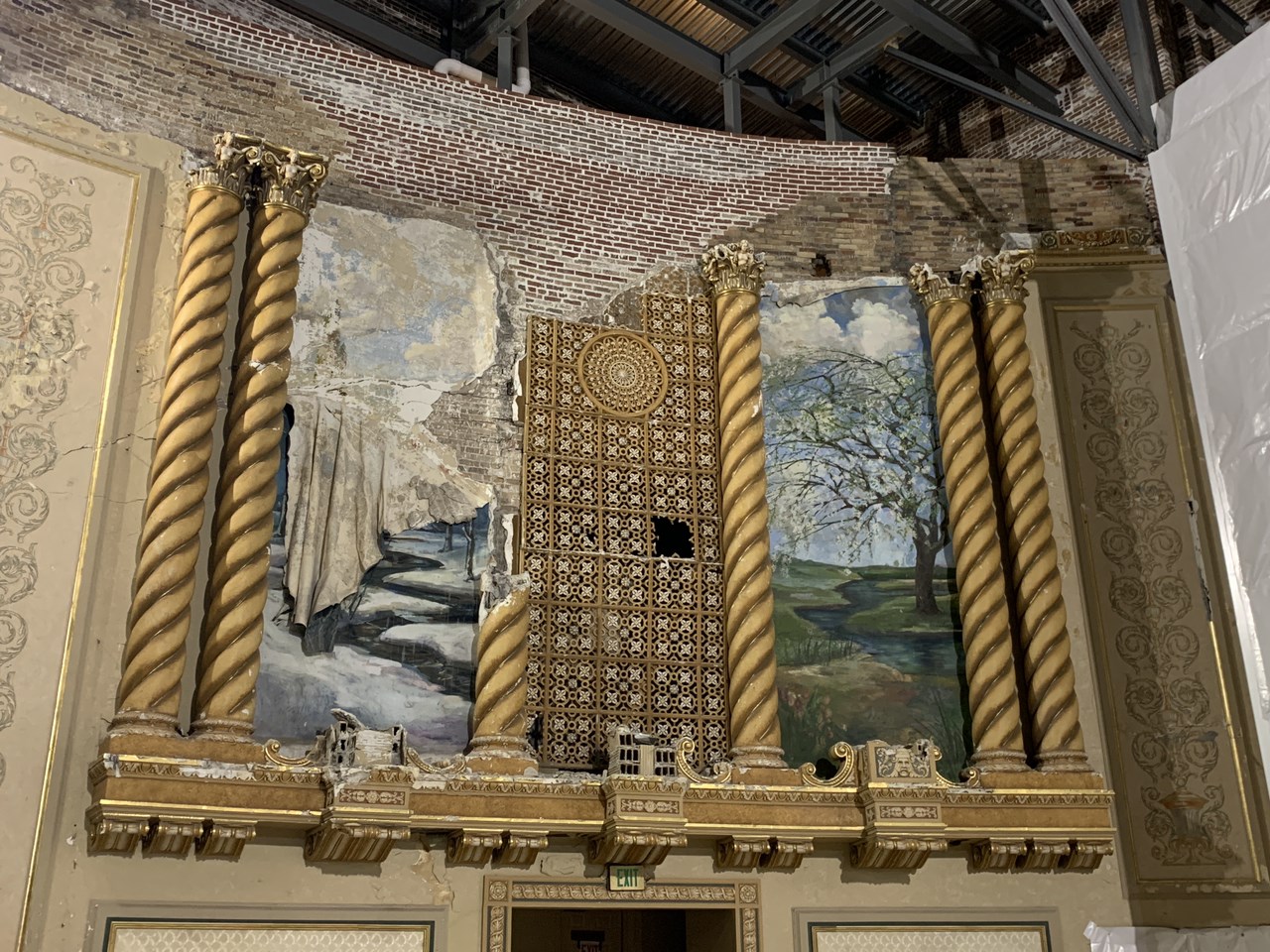
POLICYHOLDER’S CONCERNS PRIOR TO SCOPE
When GC3 arrived on the site, securing and protecting the theatre's artifacts was a big issue we faced during the rebuild that needed to be addressed immediately, due to the collapsed, unstable walls. The theatre's stage was gone resulting from its collapse. Half of the roof was still hanging off of the building's structure.
Debris was still hanging on the theatre's interior. Getting the fallen debris down and stabilizing the building, until completion, proved to be critical during the rebuild. The historical component the Sandusky State Theatre possesses, along with coordinating the project schedule around the weather in North Central Ohio made the rebuild unique.
The policyholder's initial concerns for the rebuild were being able to remove the rubble and dry out the basement, as a result from water damage sustained, and getting the structure of the roof back on to limit potential future damage to the building's interior.

COLLABORATION
When disaster struck the Sandusky community, the board of directors of the Sandusky State Theatre voted to rebuild the iconic venue. Residents came together in an effort to save the building. Donations from the community came pouring in, allowing the board to focus on working with the community and its donors to ensure that it continues with its programming once it's rebuilt.
The Sandusky State Theatre turned to GC3 to provide the repair, per the agreed upon scope. We hired a subcontractor to clean up the area and demobilize from the job site. We also brought in a glassing subcontractor to remove a glass light next to a pair of store front doors on the watered street. This was followed by hard piping the sump pump pit line to the street.
Project Manager Don Brusseau conducted biweekly conference calls with Sandusky's integrated design firm to ensure the rebuild stayed on schedule. When our loss consultant arrived on site, he met with their project development engineer, along with three representatives from the foundation and steel contractor and the president of the masonry firm. They discussed the details needed for the steel/foundation contractor to get started on the four column footings, along with forming and getting concrete into the theatre's basement.
The foundation company’s project manager reviewed the crane set-up and how the steel columns would be set after we got the forms set for the footings. The masonry firm came with 3D sketches of the exterior walls with areas of removal. This allowed us to start on the proscenium wall, as brick started while footings were being placed in the basement. Brusseau met with the building official to discuss the permitting requirements. Don walked him through the theatre and gave the plans examiner a set of the 100% drawings for review.
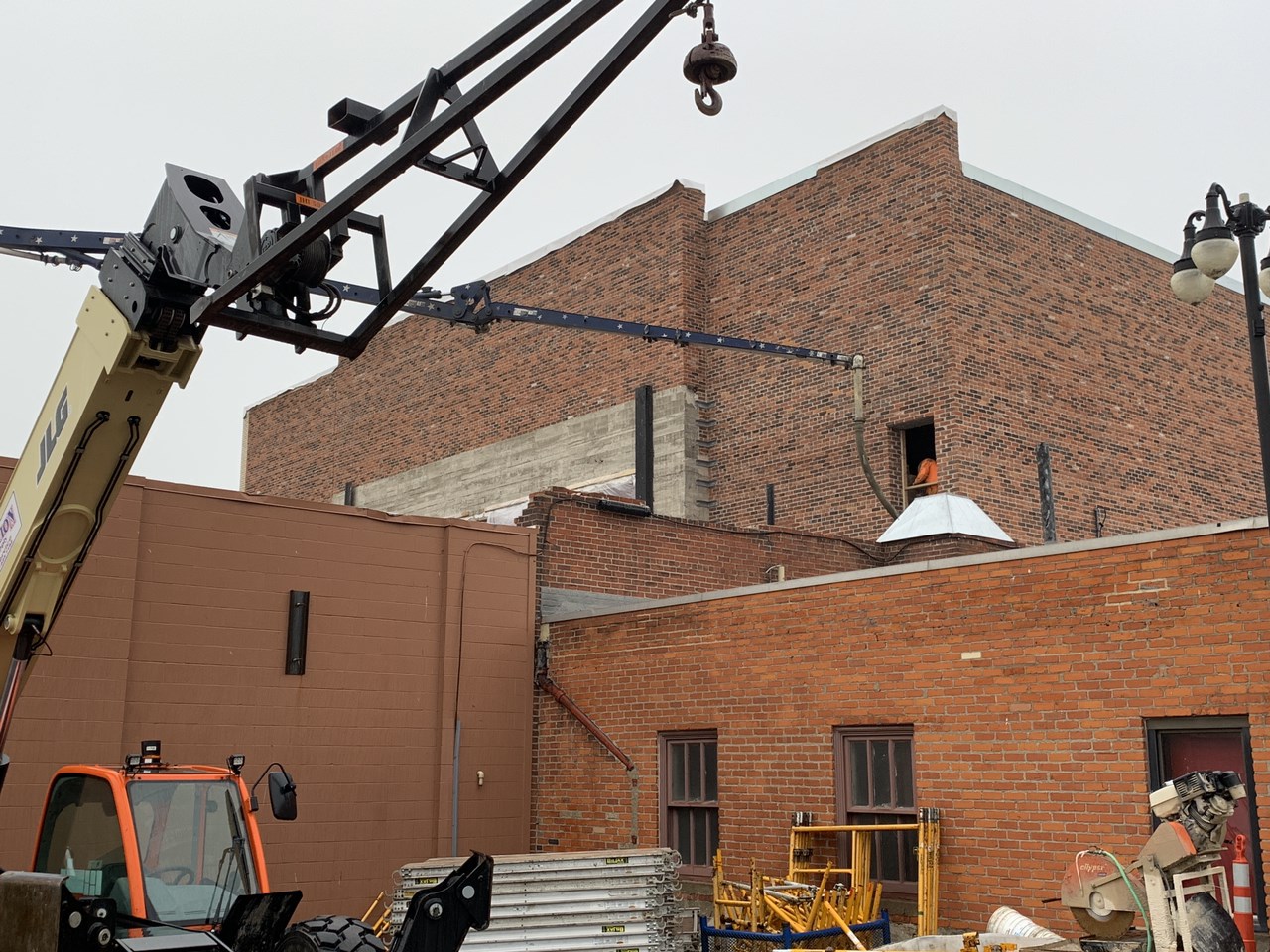
RECOVERY
Though the storm destroyed much of the historic theatre and left extensive damage to the roof and the building's interior, the chandelier that hangs as the theatre's centerpiece, was still intact. The rebuilding of the theatre is still a work in process. However, Sandusky is showing many signs of improvement. The site was mitigated, demoed, enclosed and cleaned up in March.
Last month, we conducted a meeting to review the HVAC for the theater while reaching out to erosion control subcontractors in the area. An erosion control contract was created for the excavation company and Don Brusseau communicated with our engineering consultant regarding the boring testing. GC3 is currently awaiting locations to be identified by the architectural firm’s project engineer to confirm the date of the testing.

